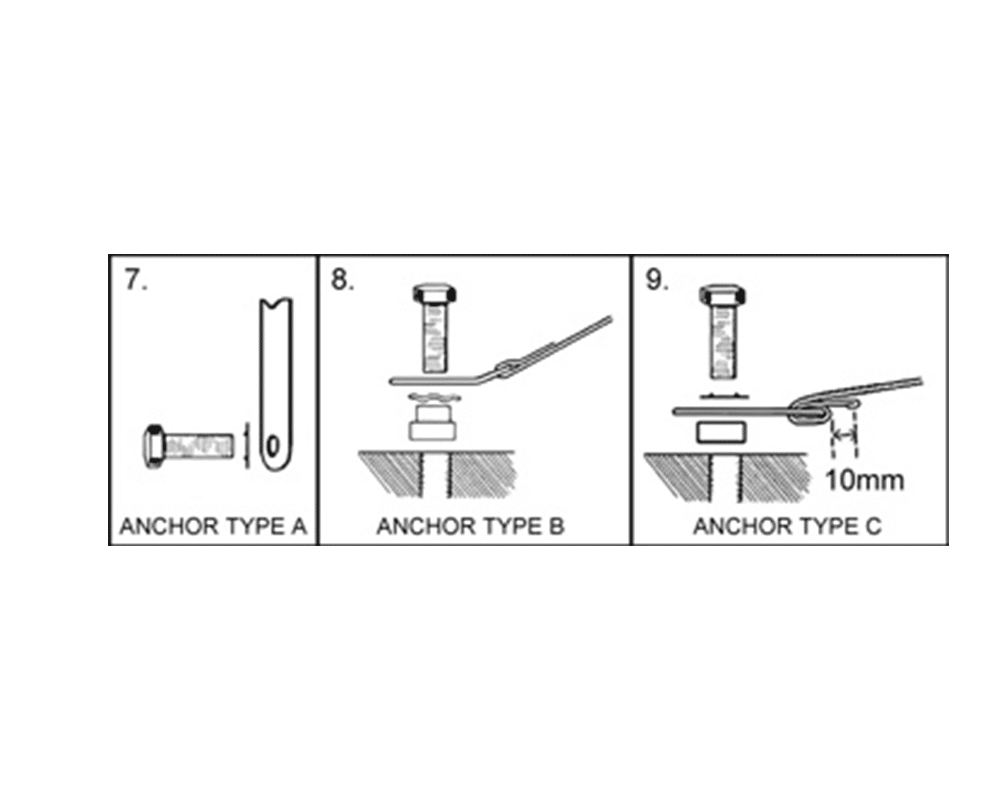Static Fitting
Fitting
Locate anchorage points in car. Diagrams 1-3 show typical configurations.
Install belt referring to appropriate anchorage diagrams 6 -11.
The length of the buckle webbing on rear seat belts should be adjusted so that the buckle is clear of the seat cushion & positioned just on or below the hip.
After adjustment ensure that the webbing is pulled neatly and tightly to eliminate any loops. If the buckle is required to be adjusted to its maximum length, the free end of the sewn-over webbing should be no less than 10mm (diagram 9).

Users and Maintenance Instructions
FASTENING THE BELT: Insert belt tongue into buckle, a positive locking ‘click’ indicates assembly.
RELEASING THE BELT: Press the release button, the tongue will be ejected clear of the locking mechanism within the buckle.
BELT ADJUSTMENT: Fasten the belt and adjust length to suit. The lap section should be comfortably tight.
TO TIGHTEN: Pull free end of webbing through adjuster until required length is reached.
TO LOOSEN: Tilt the adjuster by means of the grip and slide it along the strap until suitably adjusted.
IMPORTANT
- These instructions should be passed to the owner/driver.
- The belt is designed for use by one person and must not be put around a child seated on a persons lap.
- It is important to wear the belt on each journey.
- The belt is suitable for restraining most child seats and boosters.
- It is not intended for children under 10 years old unless used with other approved restraints.
- The belt should at all times be adjusted and used in accordance with the instructions. No excessive slackness should be present.
- Once installed the diagonal should pass across the centre of the shoulder and the buckle should lie just on or below the hip.
- Avoid twisting the webbing during use. Webbing must not be allowed to chafe, i.e. against sharp edges.
- Do not make alterations or additions to the belt. If in doubt, consult the manufacturer.
- Periodic inspection of the belt and installation is recommended.
- Belts need to be in good condition. If they have been cut, frayed, damaged or stressed through impact they should be replaced. After impact, the car anchorage points should also be checked.
- To clean use warm soapy water only. Do not use chemical cleaners, Bleach or Dye. Contamination with petrol, Grease and Acid will be detrimental.




